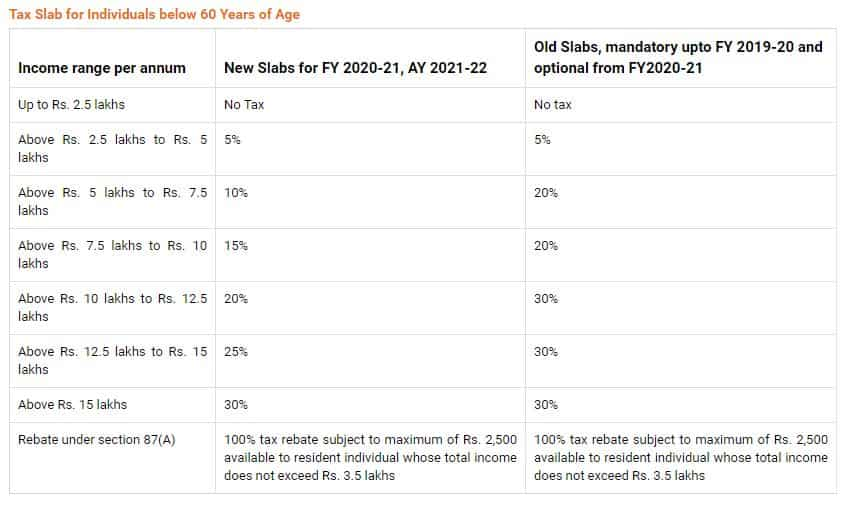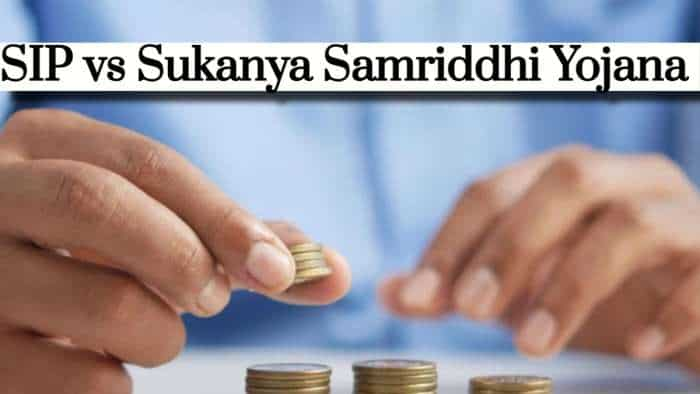Income Tax Slabs for AY20-21: Which ITR option is better for you; here is what experts' say
Income Tax Slabs for FY2019-20: One should use a new income tax calculator and then decide which option is better suited for them.

Income Tax Slabs for FY2019-20: The income tax calculator suggests that calculation of income tax in India is done based on applying different tax rates to different annual income groups, which are called income tax slabs. As per the new income tax calculator available on the official website of the Income Tax Department, actual annual taxable income is calculated as per the provisions of various sections in the Income Tax Act 1961, providing for different income inclusions and exclusions for the same. An earning individual had a clear view about their income tax outgo but ever since the Union Budget 2020 got presented, people are confused with their income tax slabs and the option that is useful for them in saving their hard-earned money. They said that income tax slabs for FY2019-20 are unchanged as one is on verge of filing one's tax, the two options are available for income tax return filing for FY2020-21.
As per the Money Bill 2020, if an earning individual chooses the new income tax slabs, he or she will have to lose around 70 tax exemption benefits which they claim while filing their income tax return (ITR), especially in the Section 80C of the Income Tax Act 1961. But, if we go by the experts' views, people have to lose tax benefit on investment levels, tax exemption on the interest earned and the maturity amount is still exempted from any kind of income tax liability. So, those investment tools that fall under the 'EEE' category, they will continue to fetch tax-free interest returns and maturity.
See Zee Business Live TV streaming below:
According to Jitendra Solanki, a SEBI registered tax and investment expert key highlights of the Union Budget 2020 is important for each and every income taxpayer. Asked about these key highlights of the income tax in the Union budget 2020 Solanki listed out the following:
1] Option to the taxpayer choose between old income tax rate and slabs and the new ones;
2] New tax slabs offer a reduction in applicable tax rate from 20 per cent to 10 per cent and from 30 per cent to 20 per cent in some cases (details in the table below); and
3] In case the taxpayer opts for new slabs and rates, no exemption or deduction can be claimed such as those on account of house rent allowance (HRA) investments, LIC premium, school fees, mediclaim etc.
Income Tax Slabs:
"Cess at 4 per cent of tax applicable in all cases. Surcharge at 10 per cent for income above Rs 50 lakhs and at 15 per cent for income above Rs 1 crore," said Jitendra Solanki.
Solanki said that those who want to remain in the same regime, their income tax slabs for FY2020-21 will be the same as it was in income tax slabs for FY2019-20.
Highlighting the income tax rebate that an income taxpayer can avail Manikaran Singhal, a SEBI registered tax and investment expert said, "A rebate of Rs. 12,500 is available under the old income tax regime, whereas the same rebate is available in the new income tax regime if the annual taxable income does not exceed Rs. 5 lakhs." Singhal went on to add that the total reduction in tax liability will range from Rs 25,000 for a person earning Rs 7.5 lakhs per annum to Rs 75,000 for a person earning Rs 15 lakhs or more per annum under the new tax slabs. However, the actual savings will be lower if one were to include the impact of fore-going exemptions under the new tax regime.
Singhal said that one should use both options before filing one's income tax and check in which option he or she will have to pay less money as a salaried person can switch from old income tax slabs option to new income tax slabs option on as many times as he or she wants.
Get Latest Business News, Stock Market Updates and Videos; Check your tax outgo through Income Tax Calculator and save money through our Personal Finance coverage. Check Business Breaking News Live on Zee Business Twitter and Facebook. Subscribe on YouTube.
RECOMMENDED STORIES

SIP Calculation at 12% Annualised Return: Rs 10,000 monthly SIP for 20 years, Rs 15,000 for 15 or Rs 20,000 for 10, which do you think works best?

FD Rates for Rs 10 lakh investment: Compare SBI, PNB, HDFC, ICICI, and Post Office 5-year fixed deposit returns

LIC Saral Pension Plan: How much should you invest one time to get Rs 64,000 annual pension for life?

SIP Calculation at 12% Annualised Return: Rs 1,000 monthly SIP for 20 years, Rs 4,000 for 5 years or Rs 10,000 for 2 years, which do you think works best?

UPS vs NPS vs OPS: Last-drawn basic salary Rs 90,000 and pensionable service 27 years? What can be your monthly pension in each scheme?

Monthly Pension Calculations: Is your basic pension Rs 26,000, Rs 38,000, or Rs 47,000? Know what can be your total pension as per latest DR rates
12:00 PM IST












 CBDT's nudge campaign: Over 30,000 taxpayers declare foreign assets, income worth about Rs 30,300 crore
CBDT's nudge campaign: Over 30,000 taxpayers declare foreign assets, income worth about Rs 30,300 crore Fact Check: Are senior citizens above 75 years old exempt from paying taxes?
Fact Check: Are senior citizens above 75 years old exempt from paying taxes? Baijayant Panda to chair Select Committee on Income-Tax Bill
Baijayant Panda to chair Select Committee on Income-Tax Bill Income Tax department activates section wise mapping of I-T Act, Tax bill
Income Tax department activates section wise mapping of I-T Act, Tax bill  New Income Tax Bill 2025: What changes, what remains, and how it may impact taxpayers
New Income Tax Bill 2025: What changes, what remains, and how it may impact taxpayers